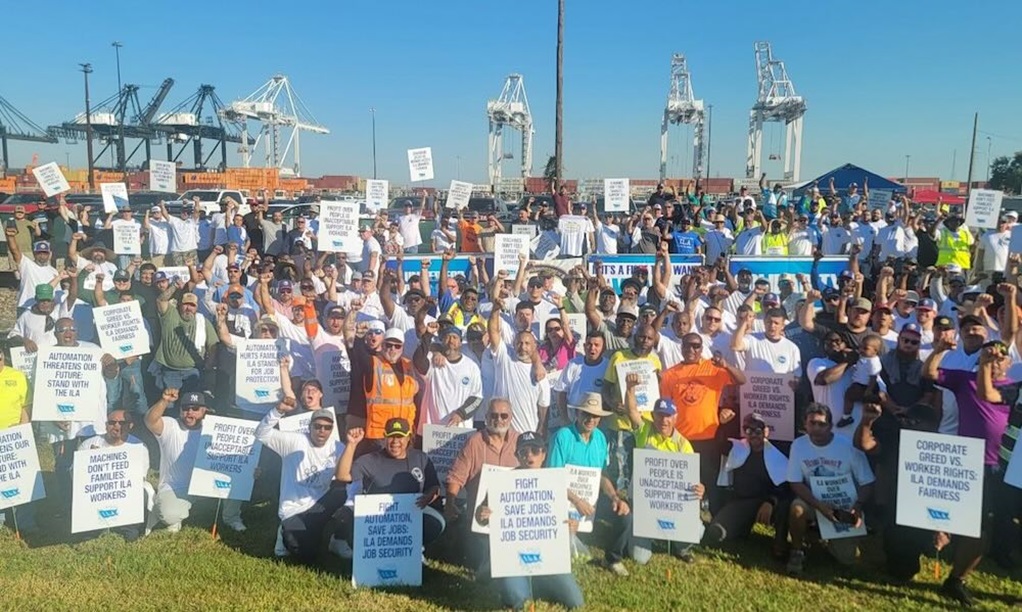Strike across America’s eastern seaboard enters its third day, with experts now suggesting the industrial action could last weeks rather than days.
Around 45,000 dockworkers at ports stretching from Maine to Texas went on strike on Monday night in the largest terminal industrial action seen anywhere in the world this century, something that has seen a number of boxlines call force majeure this week.
The International Longshoremen’s Association (ILA) union has not been able to come up with a new contract with an employer group, the United States Maritime Alliance (USMX), having sought wage increases of more than 70% plus commitments by port operators not to automate their facilities.
The USMX said yesterday it is ready to reopen negotiations with the International Longshoremen’s Association (ILA), but not under pre-conditions set by the union.
On the ground, port agent Inchcape reports the strike has been felt most acutely at container and roro terminals across the US east and Gulf coasts. Private terminals, especially those handling bulk and liquid cargo, are less impacted.
With both president Joe Biden and the Republican nomination for the White House, Donald Trump, coming out in support of the ILA’s stance this week, experts are increasingly convinced that this strike, the first seen on the US east coast since 1977, will be a protracted one.
At least 45 container vessels that have been unable to unload had anchored up outside the strike-stricken ports by Wednesday, up from just three before the strike began on Sunday, according to Everstream Analytics. The vessel backlog could double by the end of the week, the data firm warned.
Regardless of the building supply chain mayhem, spot freight rates published today by Drewry continued their decline. The World Composite Index, a global spot rate average was down by around $100 per feu to stand at $3,489.33. Rates from Asia to the US east coast dropped by $106 to $5,922 per feu, Rotterdam to New York saw a $6 drop to $2,061 per feu, the reverse trade – New York to Rotterdam – did climb, albeit just $2 to $724 per feu.
Projections from Sea-Intelligence in its report says: For every week of strike, more than 60 container vessels will start to pile up outside east coast ports, and a third of them will be queueing outside New York. Every week of strike will lead to a capacity loss of more than 400,000 teu, more than 1.4% of the global fleet, in turn pushing up freight rates, not just on the trades to the US, but likely across all major deepsea trades.
If the strike lasts for a week, then perishable goods will start to spoil, Sea-Intelligence warned, adding that if the walkout lasts for more than a month, it will almost invariably push the US economy into a recession.








